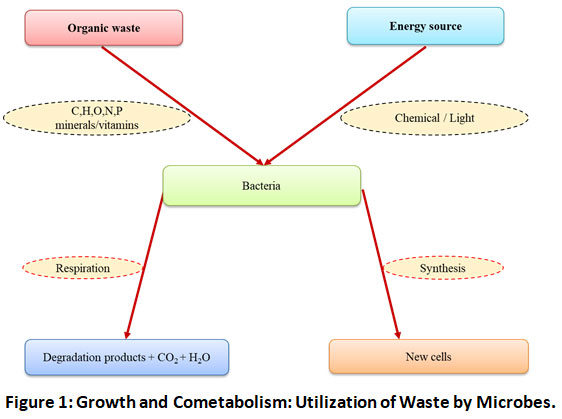Organic Waste Management
Prashant K Maheshwari *
1
Department of Environmental Science,
Jawaharlal Nehru University,
Bhopal,
M.P.
India
2
Department of Environmental Science,
Ramjas College, University of Delhi,
India
Corresponding author Email: prak@gmail.com
Copy the following to cite this article:
Copy the following to cite this URL:
Citation Manager Publish History
Select type of program for download
| Endnote EndNote format (Mac & Win) | |
| Reference Manager Ris format (Win only) | |
| Procite Ris format (Win only) | |
| Medlars Format | |
| RefWorks Format RefWorks format (Mac & Win) | |
| BibTex Format BibTex format (Mac & Win) |
Article Publishing History
| Received: | 2022-06-01 |
|---|---|
| Accepted: | 2022-07-29 |
| Reviewed by: | 
 Vasudeva Rao
Vasudeva Rao
|
| Second Review by: |

 Bala Kumaran
Bala Kumaran
|
| Final Approval by: | Gopal Krishan |
It is not only the underdeveloped countries that are affected by unmanaged waste, developed countries that are chief contributors of solid waste mess are severely impacted too. Poorly managed waste is seriously deteriorating the health of world’s ocean, transmitting diseases, clogging drains and causing floods thereby hinders economic growth, hurts the environment and human welfare5
The rate of waste generation is swelling progressively as almost 201 billion tonnes of municipal solid waste(MSW) is produced annually worldwide with 33% of it is not managed in an environmental friendly manner(World Bank’s ‘what a waste 2.0’ report 2018). It is estimated that due to rapid urbanization and population pressure, global waste will increase by 70% to about 340 billion tonnes annually. India contributes around 50 million tonnes of MSW every year 6.
Organic waste being the largest component of MSW in developing countries consists of farmyard wastes, food and agro-industrial wastes 7. Organic wastes abundant in organic fraction, can be transformed into renewable biogas and composted under controlled conditions by microorganisms 8. Microorganisms having impressive metabolic ability are widely distributed on the biosphere, growing in wide range of environmental conditions. Their nutritional versatility can be exploited for the biodegradation of organic waste. Microorganisms are considered as the principle agents which can clean and alter the complex lipophilic organic molecules which are considered recalcitrant to simple water-soluble products. Microorganisms that carry out biodegradation of organic waste includeAcinethobacter,Actinobacteria, Alcaligenes, Anthrobacter, Bacillus, Flavobacterium, Mycobacterium, Pencillium, Pseudomonas, Xanthfacter, Nocardia, Serratio etc. Mankind has encountered several problems in maintaining the quality of environment, and microorganism can be invaluable in finding solutions for several problems. The greatest advantage of utilizing microbes for organic matter degradation is that these techniques are practicable and economical it would have been unfeasible to employ physical/ chemical methods 9
Techniques like bioremediation and biotransformation are used in microbial degradation to bind the innate proficiency of microbial metabolism to break down, transmute or accrue environmental pollutants. In recent years the utilization of microorganisms for organic matter degradation has grown tremendously over the years. This expeditious increase in such research has been facilitated by the omics approach (genomics, metagenomic, proteomic, bioinformatic) that has provide high throughput analysis of environmentally relevant microorganisms 10. This has enormously helped the scientific community to get new insights about the biodegradative pathways of microbes; and their ability to adapt in fluctuating environmental settings.
The objective of this review is to prompt the application or role of microorganisms in the management of organic waste. It is emerging as an area of interest for researchers across the globe to find the solutions to environmental threats posed by solid waste.
Principles of Microbial Degradation
Microorganisms utilize carbon, hydrogen, oxygen and nitrogen and the organic contaminants for their growth11. Two categories of transformations exist.
- The first step in microbial degradation is growth linked as microbes utilize organic compound such as carbon and energy to support growth and the development process.
- The second step involves the microbes utilizing respirational carbon in order to maintain their cell viability. Cometabolism is another phenomenon that involves the simultaneous degradation of two compounds also falls in second category12. Cometabolism is an essential exertion that has been utilized for organic waste degradation for more than twenty years. Such as approach is being used to degrade the hazardous solvents(PCE, TCE and MTBE)as these have harmful effects on the environment13. Such compounds are metabolically degraded by bacteria (Fig. 1)



.jpg)




